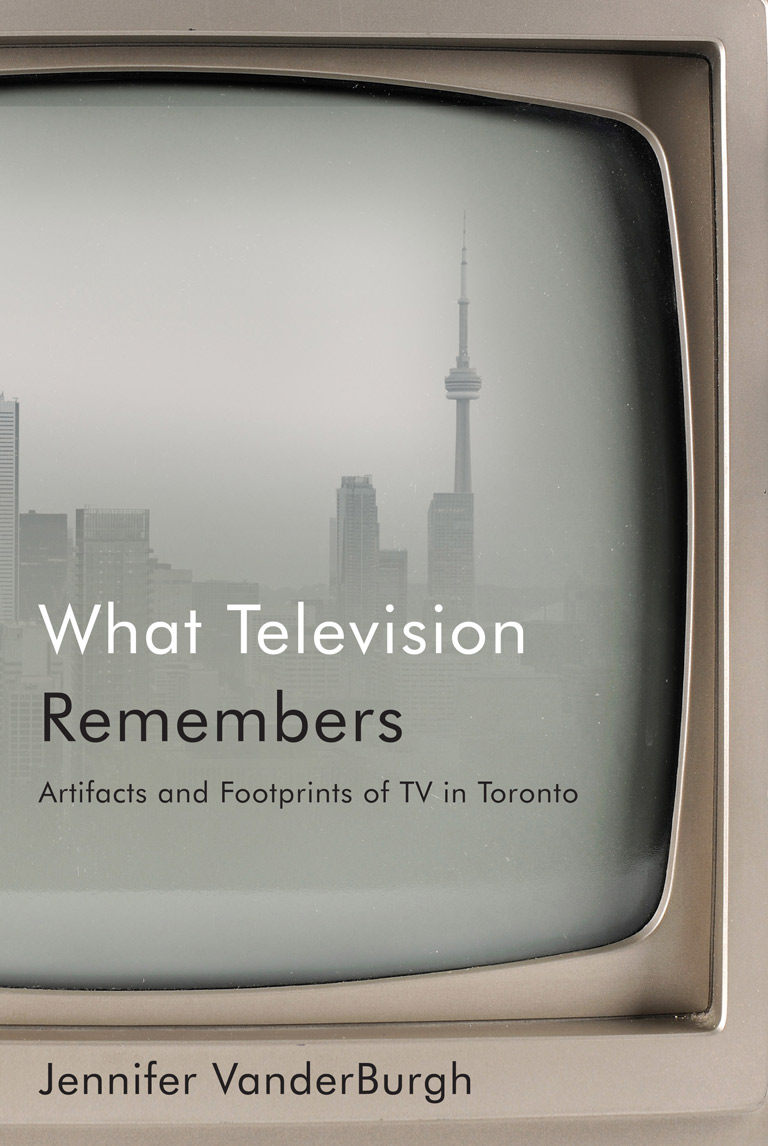What Television Remembers

What Television Remembers: Artifacts and Footprints of TV in Toronto
by Jennifer VanderBurgh
McGill-Queen’s University Press
248 pages, $37.95
Jennifer VanderBurgh asserts in this book that “television knows more, remembers more, and does more” than is usually recognized. Since their earliest days, television programs have both reflected and shaped culture.
The author, an associate professor at Saint Mary’s University in Halifax and the daughter of a CBC producer, explores the long relationship between television, particularly the CBC, and the city of Toronto. She argues that, from the 1960s to the 1980s, CBC’s Toronto-based dramas attempted to reach a national audience by having the city stand in for the idea of Canada as a collectivity. But this shifted in the 1990s to an emphasis on dramas that depicted a city of diverse individuals, “reflecting a more globally ubiquitous understanding of urbanity.”
VanderBurgh is writing for her fellow academics, so What Television Remembers is not for anyone looking for a popular history of broadcasting in this country. There are mentions of controversial thinkers such as Italian Marxist philosopher Antonio Gramsci, French philosophers Jacques Derrida and Michel Foucault, and Canadian philosopher and media theorist Marshall McLuhan, and there are quotes from experts such as an “urban semiotician” and a “media scholar.”
With 7 uniquely curated newsletters to choose from, we have something for everyone.
But there are also fascinating glimpses into the ways television has marked various stages in the evolution of Canada, as the medium itself has developed. Sales of television sets jumped in 1953, in anticipation of Queen Elizabeth II’s coronation — although a brand-new television set then cost twelve to fourteen per cent of the average annual household income.
The newly established CBC won the North American race to broadcast the ceremony by rushing the BBC’s film via helicopter, jet, and then fighter plane from England to Canada for a rebroadcast only seven and a half hours after the event. (The technology for transatlantic broadcasts had not yet been developed.) The coronation, writes VanderBurgh, “consolidated national networks as well as local and transnational social identities.”
Advertisement
We hope you’ll help us continue to share fascinating stories about Canada’s past by making a donation to Canada’s History today.
We highlight our nation’s diverse past by telling stories that illuminate the people, places, and events that unite us as Canadians, and by making those stories accessible to everyone through our free online content.
Canada’s History is a registered charity that depends on contributions from readers like you to share inspiring and informative stories with students and citizens of all ages — award-winning stories written by Canada’s top historians, authors, journalists, and history enthusiasts.
Any amount helps, or better yet, start a monthly donation today. Your support makes all the difference. Thank you!
Themes associated with this article
Advertisement
Save as much as 52% off the cover price! 6 issues per year as low as $29.95. Available in print and digital.




